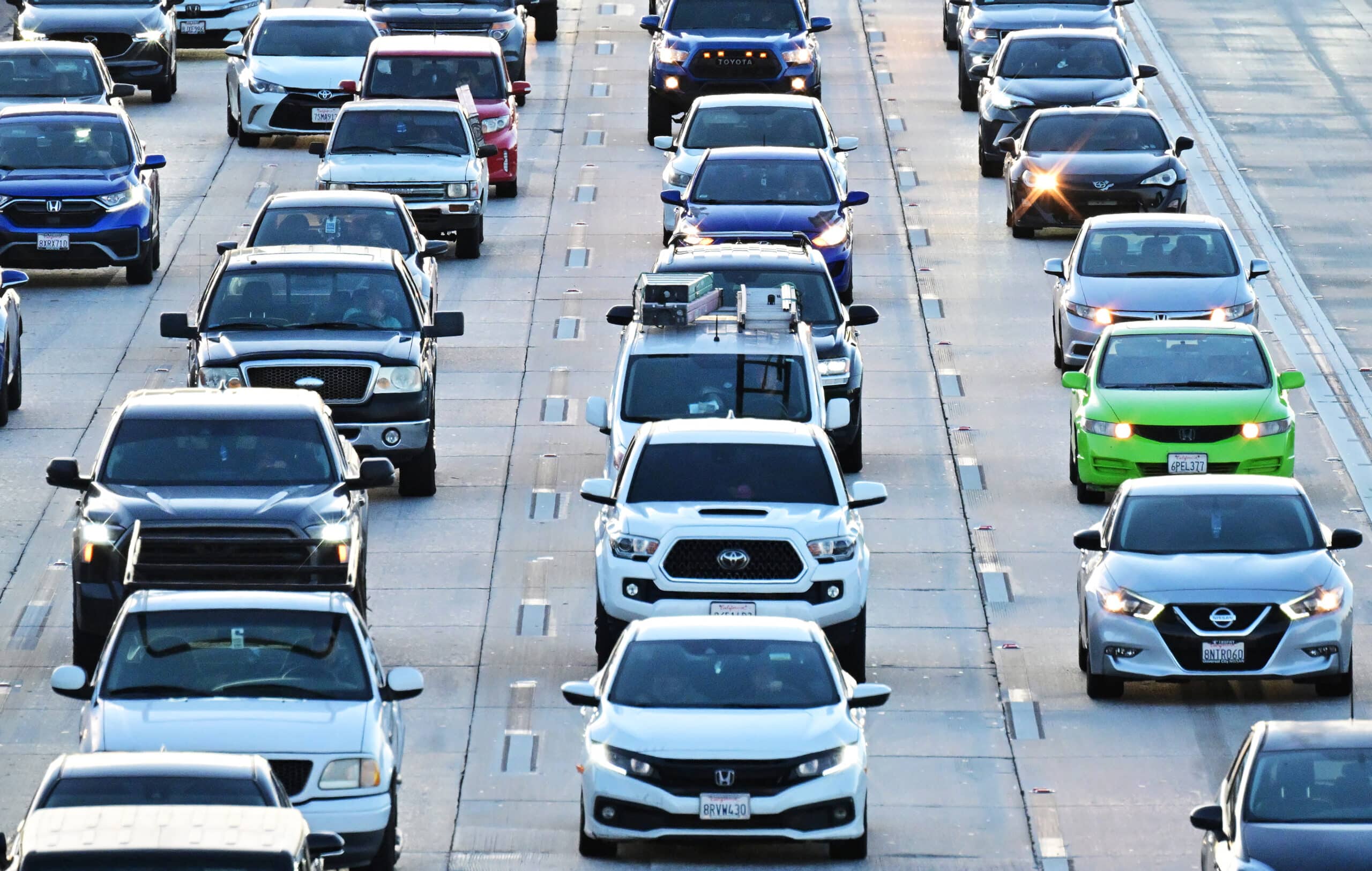
(FILES) Cars make their way in traffic on a Los Angeles freeway on January 25, 2024. Retail sales in the US soared past analyst expectations in July, according to data released on August 15, 2024, by the Department of Commerce, helped by the autos segment and bringing some relief to policymakers. (Photo by Frederic J. BROWN / AFP)
Washington, United States — Retail sales in the United States soared past analyst expectations in July, according to government data released Thursday, helped by the autos segment and bringing some relief to policymakers.
US consumption has remained resilient despite high interest rates, and experts are closely monitoring if this holds up until the central bank begins rate cuts.
A weaker than expected labor market report recently sparked market turmoil over fears that the world’s biggest economy was in worse health than anticipated — but continued spending should allay recession worries.
READ: Small, well-built Chinese EV poses a big threat to the US auto industry
In July, overall retail sales came in at $709.7 billion, up 1.0 percent from June’s figure, said the Department of Commerce.
This was significantly higher than the 0.3 percent bump forecast by analysts at Briefing.com.
But June’s performance was revised downwards, with sales slipping 0.2 percent in the month instead of being virtually flat as initially estimated.
“The jump in headline retail sales in July largely reflected the bounce back in auto sales as cyberattack-related disruption faded,” said economist Michael Pearce of Oxford Economics.
While underlying details were weaker, he said they still pointed to consumer spending rising by a solid two percent annualized in the third quarter.
“Consumers continue to spend at a solid clip, even if they are more budget-conscious and seeking more bargains,” said Nationwide chief economist Kathy Bostjancic.
READ: US Q1 auto sales grew nearly 5%, but EV growth slowed further
Bostjancic expects the positive consumer spending data tips the scales towards a “more cautious 25 basis points cut” by the Federal Reserve in September.
“The ongoing resilience of consumer spending should ease recession fears and reduce the odds markets have placed on a larger 50 basis points cut,” said Pearce.
Instead, the Fed could opt for more gradual reductions.
Excluding motor vehicle and parts, retail sales were up by a smaller 0.4 percent from June, said the Commerce Department.
Motor vehicles and parts dealers saw sales rise 3.6 percent from June to July, while sales at grocery stores increased 1.0 percent.
But Bostjancic warned that “the consumer is becoming more frugal in its spending as they have drawn down their savings, increasingly tapped credit, and still face high prices especially for services.”